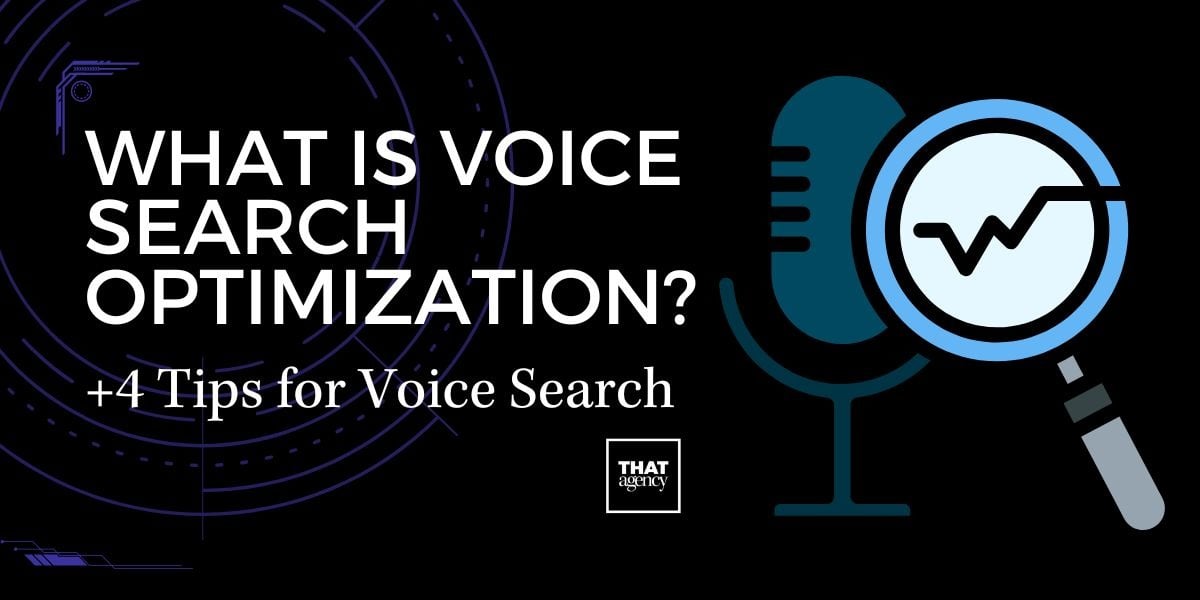Growing your business isn’t just about making more sales—it’s about increasing your revenue in a smart, sustainable way. That’s where revenue growth comes in. If your business is bringing in more money this year than it did last year, that’s a sign of healthy growth. But if your revenue has stalled (or worse, dropped), it might be time to rethink your strategy.

So, what exactly is revenue growth, and how can you improve it? In this guide, we’ll break it all down in a way that’s easy to understand, plus share actionable tips to increase revenue and take your business to the next level.
What Is Revenue Growth?
Revenue growth is the increase in the money your business makes over time. It’s one of the most important indicators of success because it shows whether your company is expanding, staying the same, or shrinking.
Businesses typically measure revenue growth as a percentage and compare it over different time frames, such as:
- Month-over-month (MoM): How much your revenue changed compared to the previous month.
- Quarter-over-quarter (QoQ): Revenue growth measured every three months.
- Year-over-year (YoY): Comparing your revenue from one year to the next to see long-term trends.
For example, if your business earned $100,000 last year and $120,000 this year, you’d calculate revenue growth like this:

For example:
- Previous year revenue: $100,000
- Current year revenue: $120,000
- Revenue growth:

A positive percentage means your business is bringing in more money than before—this is what you want. A negative percentage means revenue is shrinking, which could be a sign that you need to adjust your strategy.
How Can You Tell If Your Revenue Growth Is Healthy?
While any increase in revenue is a good sign, it’s important to compare your growth to industry benchmarks. Some industries naturally grow faster than others. A tech startup, for example, may aim for 50% annual revenue growth, while a well-established manufacturing business might see 5-10% as a strong result.
To determine if your revenue growth is healthy:
- Compare your growth rate to similar businesses in your industry.
- Look at long-term trends—steady growth is better than sharp spikes followed by declines.
- Consider your profit margins—growing revenue is great, but not if your expenses are growing just as fast.
Why Revenue Growth Matters
Growing revenue doesn’t just mean more money in the bank—it impacts nearly every aspect of your business. Here’s why it’s so important:
1. It Gives You a Competitive Edge
The more your revenue grows, the stronger your position in the market. Businesses with steady growth can:
- Invest in better products and services to outperform competitors.
- Spend more on marketing and advertising to attract new customers.
- Offer better deals or higher salaries to secure top talent.
A business that isn’t growing is at risk of falling behind. If competitors are growing while you’re staying the same, it’s only a matter of time before they start winning over your customers.
2. It Makes Your Business More Stable
Economic downturns, seasonal slowdowns, or unexpected expenses can all impact your business. If your revenue is growing, you have more financial flexibility to handle these challenges.
Growing revenue allows you to:
- Build a financial safety net so you’re prepared for slow periods.
- Reinvest in your business by upgrading equipment, hiring more employees, or launching new products.
- Negotiate better deals with suppliers and vendors since higher revenue can mean higher order volumes.
Businesses that don’t grow often struggle to keep up with rising costs. If your revenue stays flat while expenses increase, your profit margins shrink, making it harder to operate long-term.
3. It Attracts Investors and Partners
If you ever want to raise money from investors or form strategic partnerships, revenue growth is one of the first things people look at. A business that consistently grows its revenue appears:
- More stable and reliable, making investors feel confident about funding it.
- More valuable, increasing the likelihood of partnerships or acquisitions.
- More scalable, meaning it has the potential to expand successfully.
Even if you don’t plan to seek outside investment, steady revenue growth makes it easier to secure loans or lines of credit to support your business. Banks and lenders want to see proof that your company is financially healthy before offering favorable terms.
4. It Helps You Hire and Retain Top Talent
Employees want to work for companies that are growing and succeeding. When revenue is increasing, your business can:
- Offer competitive salaries and better benefits.
- Provide growth opportunities so employees can advance in their careers.
- Create a positive work environment with resources to support staff.
On the flip side, a company with little to no revenue growth may struggle to keep employees motivated. If people don’t see opportunities to grow within the business, they may start looking for jobs elsewhere.

How to increase revenue
Increasing revenue isn’t just about selling more—it’s about making strategic decisions that help your business bring in more money while keeping costs in check. Below are two critical strategies to help you maximize revenue: adjusting your pricing strategy and improving your online presence.
1. Adjust Your Pricing Strategy
Are you charging the right amount for your products or services? Your pricing strategy can make or break your revenue. If your prices are too low, you could be losing potential profits. If they’re too high, you might be pushing customers away. Finding the right balance is key to increasing revenue without sacrificing customer satisfaction.
How Do You Know If Your Pricing Is Right?
Here are a few signs that your pricing may need an adjustment:
- Your sales are high, but profits are low: This could mean you’re underpricing your products and missing out on potential earnings.
- Customers hesitate before purchasing: If customers frequently abandon their carts or ask for discounts, your prices may be too high.
- Your competitors charge significantly more or less: If your prices don’t align with the market, you may need to reassess.
How to Improve Your Pricing Strategy
Fine-tuning your pricing strategy can have a big impact on revenue. Here are some ways to do it:
- Research Competitor Pricing:
- Analyze what similar businesses are charging.
- Consider offering better value rather than just lower prices.
- Offer Tiered Pricing:
- Create pricing levels to appeal to different customer segments.
- Example: A basic version for budget-conscious buyers, a mid-tier option with added value, and a premium option for customers who want the best.
- Experiment With Price Changes:
- Small price increases can boost revenue without losing customers.
- Test different prices and analyze customer reactions.
- Use Bundling to Increase Sales:
- Offer package deals that combine multiple products or services at a discounted rate.
- Example: A hair salon could bundle a haircut, color, and styling for a reduced price compared to purchasing them separately.
- Be Strategic With Discounts:
- Instead of constant markdowns, create limited-time offers to drive urgency.
- Offer discounts to repeat customers to encourage loyalty rather than one-time sales.
Adjusting your pricing isn’t about making drastic changes overnight—it’s about testing, refining, and finding what works best for your business and customers.
2. Improve Your Online Presence
A strong online presence is essential for driving revenue in today’s digital world. If customers can’t find you online—or if they have a frustrating experience when they do—they’re likely to take their business elsewhere.
Why Is an Online Presence Important for Revenue Growth?
Your online presence affects your revenue in several ways:
- Visibility: If people can’t find your business online, they won’t buy from you.
- Credibility: A professional website and active social media accounts build trust with potential customers.
- Convenience: A smooth, user-friendly experience encourages customers to make a purchase.
- Engagement: Social media and digital marketing keep customers connected and interested in your brand.
How to Improve Your Online Presence
If your website and digital marketing aren’t optimized, you could be missing out on significant revenue opportunities. Here’s how to fix that:
1. Optimize Your Website for Sales
Your website is often the first interaction a customer has with your business. If it’s slow, hard to navigate, or outdated, you could be driving potential buyers away.
How to improve it:
- Ensure mobile-friendliness: More than half of web traffic comes from mobile devices. If your site isn’t easy to use on a phone, you’re losing customers.
- Speed up load times: Slow websites cause visitors to leave. Use tools like Google PageSpeed Insights to check your site’s performance.
- Make navigation easy: Customers should be able to find what they need in just a few clicks.
- Include clear calls to action (CTAs): Guide visitors toward making a purchase, signing up for a service, or contacting you.
2. Invest in SEO (Search Engine Optimization)
SEO helps your website show up on Google when people search for products or services like yours. A higher ranking in search results means more visibility and, ultimately, more sales.
How to improve it:
- Use relevant keywords: Optimize your site with terms customers are searching for, such as “best home cleaning service near me” or “affordable car repair.”
- Publish valuable content: Blogs, FAQs, and guides help answer customer questions and improve search rankings.
- Optimize images and metadata: Use descriptive file names and alt text for images, and update title tags and meta descriptions.
- Earn backlinks: When other reputable websites link to your site, it boosts your credibility and helps you rank higher.
3. Leverage Social Media to Drive Sales
Social media is a powerful tool for increasing revenue, but only if you use it strategically. It’s not just about posting content—it’s about engaging with your audience and turning followers into customers.
How to improve it:
- Be active on the right platforms: Focus on where your audience spends the most time.
- Share engaging content: Post behind-the-scenes insights, customer testimonials, and product highlights.
- Respond to comments and messages: Quick, friendly replies build trust and encourage sales.
- Run social media ads: Paid ads allow you to target potential customers with precision, increasing your chances of converting them into buyers.
4. Use Online Reviews to Build Trust
Before making a purchase, many customers check online reviews to see what others have experienced. Positive reviews can increase confidence in your business and encourage new customers to buy.
How to improve it:
- Encourage happy customers to leave reviews on Google, Yelp, or industry-specific platforms.
- Respond to all reviews, good or bad. A thoughtful response to a negative review shows you care about customer service.
- Feature testimonials on your website and social media to showcase satisfied customers.
3. Offer More Products or Services
If your revenue has hit a plateau, it may be time to expand what you offer. Adding new products or services can open new revenue streams, attract fresh customers, and encourage repeat business from your existing customer base.
How Do You Know If You Should Add More Products or Services?
Before expanding, ask yourself these questions:
- Are customers asking for something you don’t currently offer? If you frequently receive requests for a related product or service, it might be a sign there’s demand.
- Do competitors offer something you don’t? If similar businesses are attracting customers with offerings you lack, it might be time to reconsider your product lineup.
- Is there a gap in your industry? Research trends to see if there’s an unmet need your business could fill.
- Are your current products/services meeting all customer needs? If customers regularly have to go elsewhere for complementary products, you may be missing an opportunity.
How to Expand Your Offerings the Right Way
Jumping into expansion without a strategy can be risky, so here’s how to do it smartly:
- Listen to Customer Feedback
- Conduct surveys or ask customers directly what additional products or services they’d like to see.
- Pay attention to reviews and comments—customers often share valuable insights about what’s missing.
- Introduce Complementary Products or Services
- If you sell haircare products, consider adding styling tools.
- If you run a coffee shop, try offering branded coffee beans for home use.
- If you provide consulting services, offer online courses to reach a wider audience.
- Test Before a Full Launch
- Start with a small test group before rolling out a new product or service to all customers.
- Offer a limited-time trial or beta version to gauge interest and gather feedback.
- Track sales data and customer responses to determine if the new offering is a success.
Expanding your products or services shouldn’t feel random—it should be a thoughtful decision based on customer needs and market demand.
4. Keep Your Customers Coming Back
Attracting new customers is great, but keeping the ones you already have is often more profitable. Repeat customers tend to spend more over time and are more likely to refer your business to others. If you can improve customer retention, you’ll boost revenue without having to constantly chase new buyers.
Why Do Customers Stop Buying?
If you’re losing customers, it’s important to understand why. Common reasons include:
- Lack of engagement: If customers don’t hear from you, they might forget about your business.
- Poor customer service: A bad experience can drive people away—even if they like your product.
- No incentive to return: Without a reason to come back, customers may move on to competitors.
- Better deals elsewhere: If a competitor offers better value, customers may switch.
How to Improve Customer Retention
To keep customers engaged and encourage repeat purchases, try these strategies:
- Start a Loyalty Program
- Offer discounts, exclusive deals, or rewards for repeat purchases.
- Create a point system where customers earn rewards for spending money with you.
- Provide a referral incentive—if customers bring in a friend, they both get a reward.
- Offer Personalized Recommendations
- Use customer purchase history to suggest products or services they might like.
- Send personalized emails with recommendations tailored to their interests.
- Offer birthday discounts or special promotions to make customers feel valued.
- Provide Outstanding Customer Service
- Respond quickly to inquiries and complaints—customers remember how you handle issues.
- Train employees to go above and beyond to make customers feel appreciated.
- Offer multiple ways for customers to reach you, such as live chat, phone support, or email.
A happy customer is a loyal customer, and increasing customer retention means more revenue without constantly needing to attract new buyers.
5. Boost Your Marketing and Sales Efforts
Even if you have the best products and customer service, people need to know about them. If you’re not actively reaching potential customers or engaging with your existing ones, you’re leaving money on the table. A strong marketing and sales strategy ensures a steady flow of new leads and repeat buyers.
Why Might Your Marketing Not Be Driving Revenue?
If your marketing isn’t leading to sales, there could be a few reasons:
- You’re targeting the wrong audience. If you’re not reaching people who actually need your product, your efforts won’t convert into sales.
- Your messaging isn’t clear. Customers need to immediately understand why they should choose you over competitors.
- You’re not using data to refine your approach. If you’re not tracking performance, you’re guessing at what works.
- Sales and marketing teams aren’t aligned. If your marketing brings in leads but your sales team doesn’t follow up effectively, you’ll lose potential customers.
How to Improve Marketing and Sales to Increase Revenue
Here are some proven ways to make your marketing and sales more effective:
- Use Data to Target the Right Audience
- Analyze your customer demographics to refine who you’re marketing to.
- Use Google Analytics, Facebook Insights, and CRM data to track customer behavior.
- Adjust ad targeting to focus on high-intent buyers rather than broad audiences.
- Align Sales and Marketing Teams
- Ensure that marketing efforts bring in leads that sales can easily convert.
- Train both teams to communicate effectively so they work toward the same goals.
- Use customer relationship management (CRM) software to track interactions and improve follow-ups.
- Automate Marketing Efforts to Save Time
- Set up automated email sequences to nurture leads without constant manual effort.
- Use chatbots or AI-powered customer support to engage visitors instantly.
- Schedule social media posts and ads in advance to maintain consistency.
A well-executed marketing and sales strategy doesn’t just bring in new customers—it keeps your brand top-of-mind for repeat business, which helps maximize revenue.
6. Expand Into New Markets
If your current audience has reached its limit, your business may need to look beyond its usual customer base to continue growing. Expanding into new markets can help you reach different demographics, enter new locations, or offer your services in new ways.
What Does Expanding Into New Markets Mean?
There are several ways to approach market expansion:
- Targeting a new demographic – If your current customers are mostly young professionals, could retirees or students also benefit from your products or services?
- Expanding geographically – If you only operate in one city or region, could you expand to another location?
- Offering your product in new formats – If you sell in physical stores, could you expand to e-commerce? If you offer in-person services, could you provide virtual options?
- Entering international markets – If your product or service has demand in other countries, is it time to go global?
How to Successfully Expand Into a New Market
Before jumping into a new market, take the time to research and strategize. Here’s how to do it right:
- Research Potential New Audiences
- Identify who else could benefit from your product but hasn’t been targeted yet.
- Conduct surveys, analyze industry reports, and examine competitor expansion strategies.
- Use social media and website analytics to see if there’s unexpected interest from other regions or demographics.
- Adapt Your Products or Messaging
- Adjust your marketing and branding to appeal to a new audience.
- If entering a new geographic market, consider cultural preferences, language differences, and local buying habits.
- Modify product features, packaging, or pricing to fit the needs of a different customer group.
- Form Strategic Partnerships
- Partner with local businesses to gain credibility in a new area.
- Work with influencers, bloggers, or industry leaders who already have an audience in your target market.
- Explore co-branding opportunities, where your product is sold alongside a complementary brand’s product.
Expanding into new markets takes time and planning, but when done right, it opens the door to new revenue streams and long-term growth.
7. Improve Your Website’s Conversion Rate
Having a well-designed website is great, but if visitors aren’t turning into customers, you’re losing revenue. Many businesses focus on increasing website traffic, but more traffic alone doesn’t always mean more sales. Instead, you should optimize your site to convert visitors into paying customers.
What Is a Conversion Rate?
Your conversion rate is the percentage of website visitors who take a desired action, such as:
- Making a purchase
- Signing up for a newsletter
- Filling out a contact form
- Requesting a quote
For example, if 1,000 people visit your website and 50 of them buy something, your conversion rate is 5%.
How to Improve Your Website’s Conversion Rate
- Make It Easy for Visitors to Find What They Need
- Simplify navigation so users can quickly locate products, pricing, and key information.
- Optimize your search function to help customers find products or services faster.
- Use Clear Calls to Action (CTAs)
- Every page should guide visitors toward a next step—whether that’s making a purchase, booking a consultation, or subscribing to emails.
- Use buttons like “Shop Now,” “Get Started,” or “Book a Free Call” to encourage action.
- A/B Test Different Layouts and Messaging
- Test different versions of headlines, product descriptions, colors, and button placements to see what drives the most conversions.
- Use heatmaps to analyze how users interact with your site and adjust based on their behavior.
- Improve Website Speed and Mobile Experience
- A slow website drives customers away. Ensure pages load within 3 seconds to keep visitors engaged.
- Your site should be fully optimized for mobile users, as a large percentage of online shopping happens on smartphones.
- Include Trust Signals
- Display customer reviews, testimonials, and trust badges to reassure potential buyers.
- Offer money-back guarantees or risk-free trials to reduce hesitation.
Improving your website’s conversion rate means getting the most out of the traffic you already have, leading to more sales without increasing advertising costs.
8. Upsell and Cross-Sell to Existing Customers
One of the easiest ways to increase revenue is to sell more to the customers you already have. Instead of focusing only on attracting new buyers, businesses can make more money per transaction by using upselling and cross-selling techniques.
What’s the Difference Between Upselling and Cross-Selling?
- Upselling – Encouraging customers to buy a more expensive version of what they’re already purchasing.
- Example: A customer looking at a basic laptop is offered an upgraded version with more features.
- Cross-selling – Recommending complementary products that go with their purchase.
- Example: A customer buying a phone is also offered a phone case and wireless charger.
How to Upsell and Cross-Sell Effectively
- Recommend Premium Versions of Your Products
- Highlight features and benefits of higher-end options.
- Offer side-by-side comparisons to show why the upgraded version is worth it.
- Use phrases like “Most Popular Choice” or “Best Value” to encourage decision-making.
- Bundle Related Items Together for a Discount
- Offer discounted bundles for products frequently purchased together.
- Example: A restaurant could offer a meal combo deal instead of just individual items.
- Make it feel like a better value than buying separately.
- Train Your Sales Team to Highlight Value-Added Services
- Teach employees to suggest add-ons that enhance the customer’s experience.
- Example: A car dealership could encourage customers to add extended warranties or maintenance packages.
- Position upsells and cross-sells as helpful recommendations, not just sales tactics.
When done right, upselling and cross-selling feel natural and beneficial to the customer, leading to higher revenue and increased customer satisfaction.
9. Cut Costs and Streamline Operations
Revenue growth isn’t just about selling more—it’s about keeping more of what you earn. If your expenses are too high, even strong sales won’t necessarily translate into higher profits. Many businesses focus only on increasing revenue, but reducing unnecessary expenses can be just as effective for improving your bottom line.
Why Is Cutting Costs Important for Revenue Growth?
- Higher Profit Margins – When you lower expenses, more of your revenue turns into profit.
- More Financial Flexibility – Extra cash can be reinvested into marketing, product development, or hiring.
- Stronger Business Stability – Lower operating costs make it easier to weather slow periods.
How to Cut Costs Without Hurting Business Growth
Cutting costs doesn’t mean making random budget cuts—it’s about reducing waste and improving efficiency. Here’s how:
- Automate Repetitive Tasks to Save Time and Money
- Use software to automate scheduling, invoicing, email marketing, and customer service.
- Reduce the need for manual data entry by integrating your systems.
- Automate inventory tracking to reduce errors and excess stock.
- Negotiate Better Deals With Vendors
- If you’ve been working with the same vendors for a while, ask for bulk discounts or better payment terms.
- Compare supplier prices regularly to ensure you’re getting the best deal.
- Consider forming partnerships with other businesses to negotiate group discounts on shared expenses.
- Cut Out Marketing Tactics That Don’t Bring Results
- Analyze your return on investment (ROI) for every marketing channel—if an ad campaign isn’t delivering leads or sales, shift your budget elsewhere.
- Focus on organic growth strategies like SEO, content marketing, and referrals, which can generate traffic without high ad costs.
- Experiment with low-cost marketing tactics like partnerships, social media engagement, and customer testimonials.
- Optimize Staffing and Reduce Overtime Costs
- Evaluate your current team and see if there are areas where process improvements could reduce labor costs.
- Consider outsourcing non-essential tasks instead of hiring full-time staff.
- Reduce unnecessary overtime by improving scheduling and workload distribution.
- Go Digital Where Possible
- Reduce paper waste by moving to digital invoices, contracts, and internal documents.
- Offer remote work options where applicable to cut office expenses.
- Use cloud-based software instead of expensive on-premise IT systems.
The key takeaway: Don’t just focus on selling more—find ways to lower costs without compromising quality. A leaner business is a more profitable business.
10. Use Data to Make Smarter Decisions
If you’re not tracking your business data, you’re making decisions based on assumptions rather than facts. Data-driven decision-making helps businesses identify what’s working, what’s not, and where to invest resources for maximum growth.
Why Is Business Data Important for Revenue Growth?
- Better Forecasting – Data helps predict future sales trends, so you can plan inventory, staffing, and marketing accordingly.
- More Effective Marketing – By tracking which campaigns work best, you can focus on high-performing strategies and cut out ineffective ones.
- Stronger Customer Insights – Understanding buying patterns and preferences allows you to tailor your offerings to customer needs.
- Higher Efficiency – Data can reveal bottlenecks in your operations, helping you streamline workflows and reduce waste.
How to Use Data to Drive Business Growth
- Monitor Key Performance Indicators (KPIs) Related to Sales and Marketing
- Track metrics like conversion rates, average order value, and customer acquisition costs.
- Use KPIs to measure the effectiveness of marketing campaigns and adjust budgets accordingly.
- Compare performance across different time periods to identify trends and areas for improvement.
- Use Analytics Tools to Track Customer Behavior
- Install Google Analytics on your website to see how visitors interact with your pages.
- Use heatmaps to analyze where customers click and where they drop off in the buying process.
- Track customer lifetime value (CLV) to identify which customers generate the most revenue over time.
- Adjust Your Strategy Based on Real-Time Insights
- If certain products are selling faster than expected, increase inventory levels to meet demand.
- If website traffic is high but conversions are low, optimize your sales funnel to improve customer experience.
- If customer retention is dropping, analyze feedback and address common concerns before they become bigger problems.
- Use A/B Testing to Improve Marketing and Sales Performance
- Run A/B tests on website layouts, email subject lines, and ad creatives to see what resonates best with customers.
- Experiment with different pricing strategies to find the optimal price point for maximum sales.
- Test different promotions, discounts, or bundling options to see what drives the most revenue.
- Leverage Predictive Analytics for Smarter Decision-Making
- Use AI-driven tools to forecast sales trends and inventory needs.
- Analyze past customer behavior to predict which products or services will perform well in the future.
- Identify seasonal trends so you can adjust pricing and marketing efforts accordingly.
How Can Small Businesses Use Data Without a Huge Budget?
Many small businesses worry that using data means investing in expensive tools, but there are plenty of affordable (or free) analytics platforms available:
- Google Analytics (website traffic insights)
- Facebook and Instagram Insights (social media engagement data)
- HubSpot or Mailchimp (email marketing analytics)
- QuickBooks or Xero (financial tracking and forecasting)
The bottom line: Businesses that analyze and act on data grow faster than those that rely on guesswork. Even simple tracking and adjustments can lead to higher revenue, better efficiency, and smarter decision-making.
Final Thoughts
Revenue growth isn’t just about making more sales—it’s about improving every part of your business to bring in more money over time. Whether you’re adjusting your pricing, optimizing your website, or expanding into new markets, the key is to keep testing and refining your approach.
At THAT Agency, we specialize in digital marketing strategies that help businesses like yours increase revenue and grow sustainably. If you’re ready to take your business to the next level, contact us today and let’s make it happen.




.jpg)

